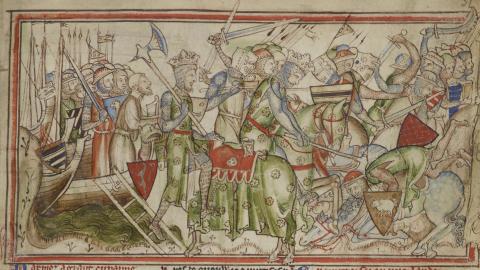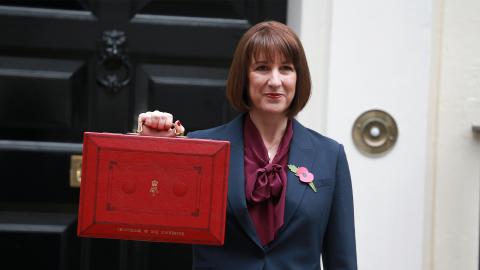State funerals are grand ceremonies to celebrate the lives and achievements of iconic individuals who have passed away. The honour is usually reserved for royals and monarchs. However, a very select group of non-royals have been commemorated with state funerals of their own.
1. Winston Churchill
Churchill’s funeral back in January 1965 remains the UK’s most recent state send-off. It was an immense international event, with more than 350 million watching around the world. Charles de Gaulle and Dwight D. Eisenhower were among the countless dignitaries present. Dockers along the Thames even dipped their cranes to salute the coffin as it was carried on a boat along the Thames – a touching tribute to a towering figure.
2. Edward Carson
Irish unionist politician Edward Carson was given a state funeral in Belfast in October 1935. As a barrister, Carson famously interrogated Oscar Wilde during the libel trial that led to the playwright’s imprisonment for indecency. But it was Carson’s passionate political career that made him an icon of his time, and inspired the scattering of soil from the six counties of Northern Ireland onto his coffin during the service at Belfast Cathedral.
3. Douglas Haig
One of the most revered and controversial commanders in British military history, Field Marshal Douglas Haig is today synonymous with the bloodshed of the Somme in World War One. He was, however, instrumental in orchestrating the Hundred Days Offensive which ended the war in 1918. Respect for Haig was so great in his lifetime that he was given a state funeral in February 1928, complete with a service at Westminster Abbey.
4. Edith Cavell
Edith Cavell was a British nurse who worked in German-occupied Belgium during World War One. As well as treating wounded soldiers from both sides, she was part of a secret network that helped hundreds of British, Belgian and French men escape the country. Executed by the Germans in 1915, it wasn’t until 1919 that Cavell’s body was returned to England, where she was given a state funeral at Westminster Abbey in honour of her selfless wartime heroism.
5. Frederick Roberts
Field Marshal Frederick Roberts was one of the looming symbols of Victorian imperialist might. Educated at Sandhurst, he won a Victoria Cross while fighting in the Indian Rebellion of 1857 (an uprising against the British East India Company). Further military adventures followed, including legendary successes in the Second Boer War. After his death in November 1914 while visiting troops fighting in World War One, he was given the honour of lying in state in Westminster Hall before being buried in St Paul’s Cathedral.
6. William Gladstone
William Gladstone was a political titan of the 19th Century, serving four terms as British prime minister. Known for his rivalry with fellow political icon Benjamin Disraeli, and his frosty relations with Queen Victoria, Gladstone was so loved by ordinary people that he was nicknamed “the people’s William”. Thousands crammed into Westminster Abbey for his funeral in May 1898, with the future Edward VII and future George V among his pallbearers.
7. Robert Napier
Victorian military giant Field Marshal Robert Napier saw combat in the Anglo-Sikh Wars as well as the Second Opium War, which was waged between the British Empire and China’s Qing Dynasty. He most famously led a daring 1868 mission to rescue missionaries held hostage by Emperor Tewodros II of Ethiopia. The latter adventure made him a national hero, and was a large reason why he was given a state funeral at St Paul’s Cathedral in January 1890.
8. Lord Palmerston
Henry John Temple, aka Lord Palmerston, is the oldest person ever to become British prime minister. He was 70 when he became leader in 1855, though his years as foreign secretary had already made him a key influence on Britain’s place in the world during the Victorian era. Queen Victoria herself overruled his wish to be buried in Hampshire after he died. Instead, in October 1865, Palmerston was given a lavish state funeral in London before being buried in Westminster Abbey.
9. The Duke of Wellington
Arthur Wellesley, the Duke of Wellington, will forever be synonymous with his decisive victory over Napoleon at the Battle of Waterloo in 1815. But, as well as being a brilliant military strategist, he was also a leading politician of his time, and was twice British prime minister. The Duke’s funeral in November 1852 was a monumental affair, with some reportedly killed in the crush as crowds flocked to see his body lying in state at the Royal Hospital Chelsea.
10. Horatio Nelson
Admiral Nelson was killed by sniper fire while leading the Royal Navy to victory at the Battle of Trafalgar in 1805. Every detail of his heroic death was immediately mythologized – including the fact that his body was stored in a cask of brandy during the voyage back. His funeral in January 1806 was a visual spectacular, with his coffin conveyed on a barge once used by Charles II, before taken to St Paul’s Cathedral on a funeral car shaped like the HMS Victory.
11. Isaac Newton
One of the most brilliant and influential thinkers in world history, Isaac Newton made strides in mathematics, physics and astronomy, and his name is still a by-word for scientific endeavour. His contemporaries clearly understood what they’d lost when he died in March 1727 – they took Newton’s body to lie in state in the medieval Jerusalem Chamber of Westminster Abbey. This period was followed by his funeral service there, watched by most of the Fellows of the Royal Society.
12. Robert Blake
Robert Blake was one of the greatest English admirals of all time – greater even than Nelson, according to some historians. Yet, because he was a staunch Parliamentarian who served at the time of Oliver Cromwell, his name fell into obscurity after the restoration of Charles II. Buried in an opulent ceremony at Westminster Abbey in September 1657 with Cromwell himself attending, Blake was later dug up and dumped in an unmarked pit on the orders of the vengeful Charles.















